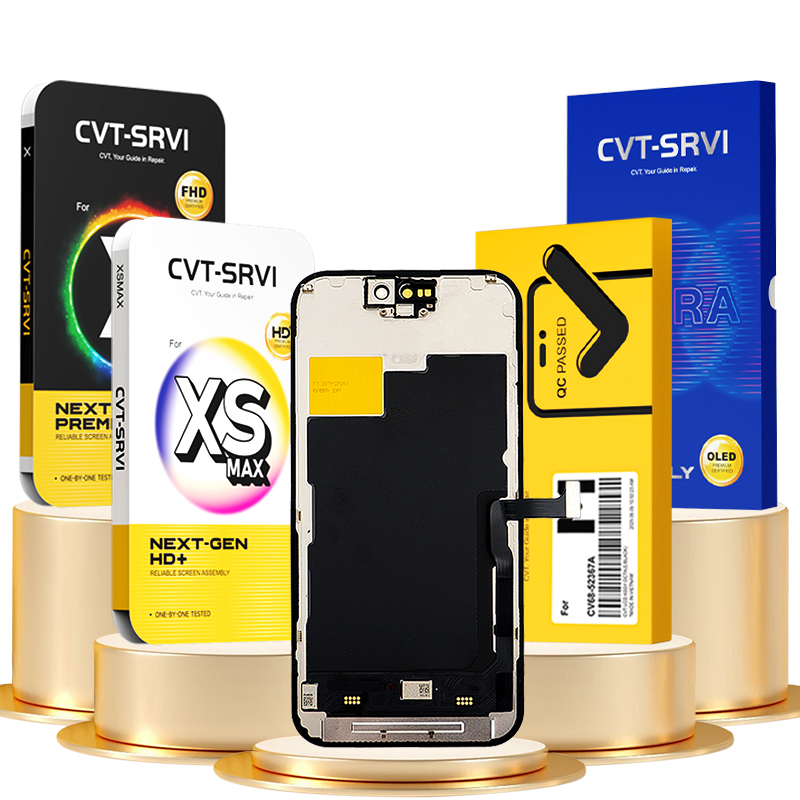flexible replacement parts what challenges does true tone overcome?

True Tone represents an innovation conceived by Apple to regulate color temperature amid ambient brightness. Thus True Tone adapts devices to render consistent and realistic colors despite surrounding light. Many perceive reduced ocular strain during prolonged True Tone usage, owing to minimization of visual stress. The innovation belongs to devices like iPhones, iPads, and Macs and it can be managed for toggling as per choice.
- Times to observe True Tone impacts are during bright outdoor reading, using a PC in dim surroundings, or nighttime video viewing.
State-of-the-Art Applications personalizing displays based on ambiance
True Tone delivers a sophisticated solution tuning color temperature per surrounding light. It relies on sensors capturing ambient illumination and recalibrates blue light instantly for a more natural eye perception. It decreases eye fatigue enhancing enduring screen visibility. True Tone technology is integrated into assorted equipment such as smartphones, tablets, and monitors.
Cellphone Display in comparison to iPhone Screen: Principal Distinctions
Despite many using “phone screen” and “iPhone display” interchangeably, clear distinctions arise between Android and iOS screens . Android displays convey numerous alternatives for size categories and resolution measures, whereas iPhones are distinguished by Retina displays. Differences also exist in types of panels used. Certain Android manufacturers employ AMOLED screens while Apple uses mainly LCD and OLED panels in their iPhones.
- Contrasts are apparent regarding palette richness and viewing extents
- Some Android models provide higher refresh rates resulting in smoother scrolling
- Overall, iPhone displays are recognized as brighter
Mechanism Behind True Tone on iPhone Devices
True Tone serves as a function aligning display hues on iPhones to ambient luminosity. It permits more pleasing viewing by adjusting to lighting variations. When True Tone is activated, sensors in the iPhone measure ambient light and modify the screen’s color temperature to be warmer in low light or cooler in bright conditions.
- Moreover, True Tone contributes to reducing ocular stress while boosting visual ease
- Enable or disable True Tone via the Settings menu under Display and Brightness
Refined Visual Environment
Display calibration to ambient light is enhanced by True Tone. This creates a more optimal visual experience, mitigating ocular weariness leading to genuine content interaction.
- Enjoy tones with enhanced liveliness and exactness
- Achieve heightened image clarity and definition
- Keep eye strain low during long device use
Does having True Tone matter?
Facing modern technology settings, electronics evolve extensively. One feature gaining popularity is True Tone technology which self-tunes display warmth respecting lighting conditions, enhancing the visual experience to be more natural and pleasant. But is having a True Tone display really relevant? The answer depends on how you use your device and your specific needs.
- Persons continuously operating devices notice True Tone easing eye pressure and fostering better comfort
- Otherwise, light users or entertainment aficionados might realize less pronounced advantages
Ultimately, whether a True Tone screen is important depends on your personal preferences and requirements. If you prioritize a more natural and comfortable viewing experience, this feature is worth considering when selecting your next device.
Pros and Cons of True Tone Features
True Tone serves as a notable ingenuity adjusting display heat linked to surrounding light. This can create a more comfortable visual experience, especially when viewing screens for extended periods. However, there are some drawbacks. Some users find True Tone may be too reactive, causing unexpected changes in color temperature.
- Detailed color tasks may not perform optimally
- Sometimes it does not perform well under all ambient light sources
Overall, True Tone represents a beneficial attribute for frequent screen users. Nonetheless, it is important to remain mindful of its disadvantages.
Reviewing True Tone Enabled Screens
True Tone features have promptly evolved user digital content experiences. This innovational feature finely tunes the color temperature of your display to match surrounding light. Accordingly, True Tone ensures a more realistic viewing experience, reducing eye strain and augmenting color definition. When analyzing screens with True Tone, consider factors such as image clarity to decide on the best match for your needs.
- What's more, True Tone can boost image brightness in certain circumstances.
- Nevertheless, not all True Tone-equipped displays are alike.
Most Popular iPhones with True Tone Displays
To get superior viewing, opt for iPhones that incorporate True Tone features. True Tone constantly calibrates screen warmth per environment, producing a para que sirve el true tone pleasant natural effect. Popular iPhone models with True Tone include XS Max, 11 Pro Max, 12 mini. These variants offer a diverse spectrum of features and specifications to meet your needs.
- Pricing for True Tone iPhones can be accessible
- Beyond cost, True Tone monitors promote visual comfort and health
Adjusting True Tone on Your iPhone
Calibrating True Tone assures screen hues conform to ambient brightness adjustments. To do this, go to "Settings" > "Brightness & Display" and engage True Tone. In that same section, you can change True Tone levels according to your preferences.
- Bear in mind that ambient lighting supports better True Tone effect
- Adjust settings incrementally to match your unique vision needs
Testing True Tone: Real Impact on Visual Experience?
Current True Tone modules provide superior and pleasing visual quality. But does it really meet these standards? To review whether True Tone significantly influences the experience, we tried its function across a variety of devices and scenarios.
- Findings shared aid in assessing True Tone’s true utility
Check this study for conclusions on True Tone’s influence on display quality!
